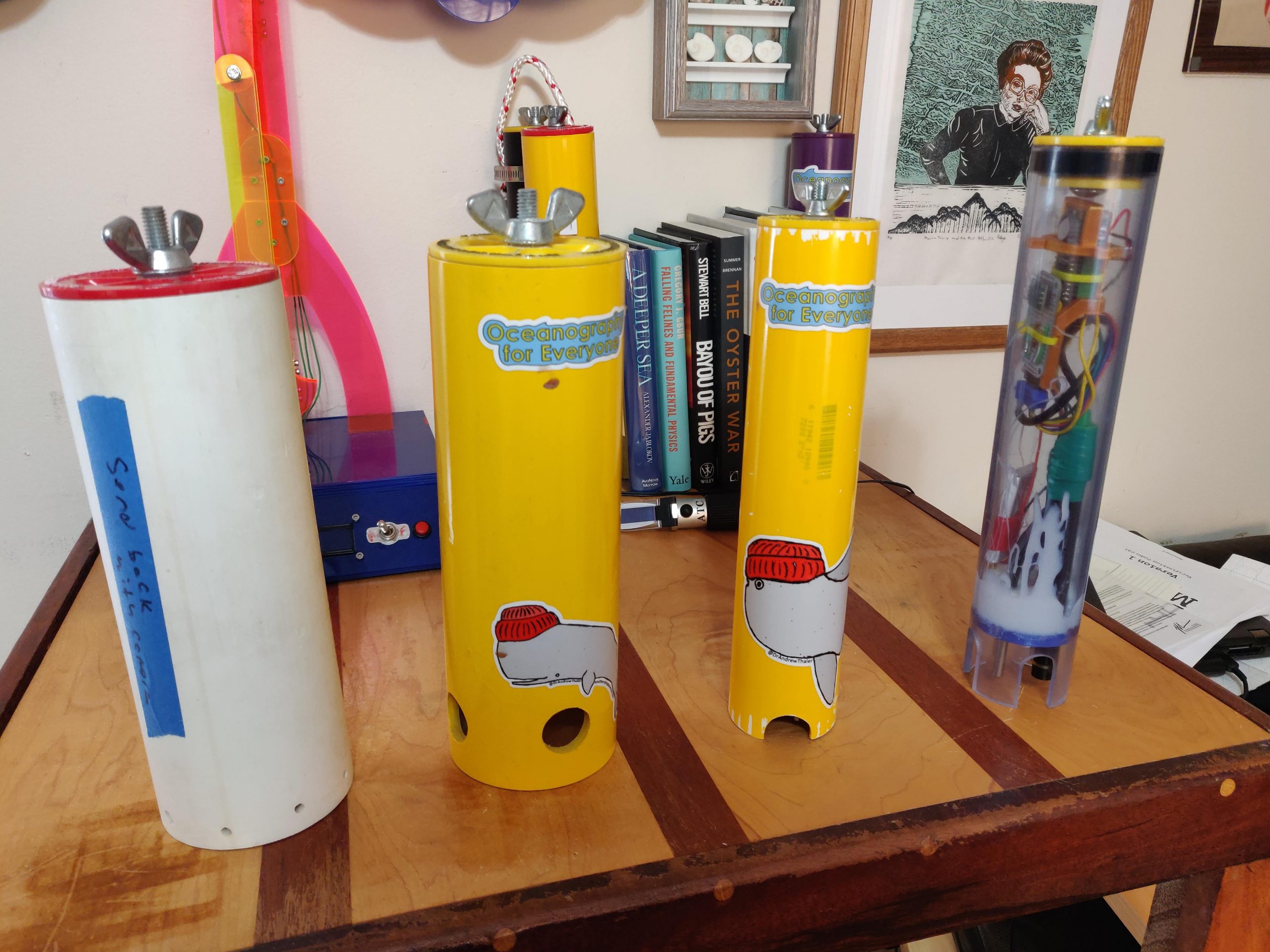Southern Fried Science has been a bit dormant for the last year, so first, a re-introduction:
I’m Andrew Thaler, I’m an ocean scientist, and I make weird tech things.
Ten years ago I inherited an old mechanical tide gauge from a lab cleanout. For some bizarre reason, I thought: what if, instead of tracking the rising and falling tides in the Beaufort Inlet, it tracked the waxing and waning of conversations about sea level rise on Twitter. And thus, the Sea Leveler was born.
In a lot of ways, the Sea Leveler was the precursor of things to come. It was exhaustively documented and released as an open-source project on GitHub. It merged the digital with the physical, creating an object that allowed you to connect an online conversation to the real-world environment through repurposed technology. It was weird. And it was fun.
The Sea Leveler itself was passed on to a good friend and champion of ocean outreach, but its legacy lives on in the plethora of projects to follow: Drown Your Town, Dolphin Vision, the reStepper, Turtle Borg, and, of course, the OpenCTD.
It should be no surprise that this slew of weird and tech projects has been particularly attractive to parents looking to get their kids engaged in STEAM projects. I strive to make even the most complicated programs, like the OpenCTD, as accessible to as many people as possible. Something as goofy as a head-mounted LiDAR array that mimics dolphin echolocation shouldn’t be out of reach for the kind of kids who want to see the world like a dolphin.
At the same time, I recognize that most parents don’t have access to a full fabrication lab in their home office. Blackbeard HQ is the rare unicorn of a facility that is both capable of bringing almost any weird ocean tech thing you can imagine into existence and also, by necessity, organized around the core principle that a six-year-old can and will press every button. Especially the big one on the GlowForge.
So where does a parent go if they’re just getting started and plan on learning right along with their kids? Despite the explosion of the Maker Movement in the 2010s (and the seeming implosion in the 2020s), there aren’t as many fantastic resources available to first-time hardware hackers as you would expect, and many of my favorites, like the still excellent Environmental Monitoring with Arduino: Building Simple Devices to Collect Data About the World Around Us, are now a decade out of date, featuring programs that are long defunct.
(Incidentally, if anyone at O’Reilly is ready for an updated guide to environmental sensing with a focus on using Arduino (and python and MakeCode) to see the world the way ocean animals do, maybe hit me up.)
So where do you go to learn if you’ve never done any of this before?
The gold standard of DIY Science, Technology, Engineering, Art, and Math projects is, without a doubt, the Adafruit Learning Portal. These well-vetted and extensively documented projects run the gamut from the dead simple Blink an LED to indoor CO2 monitors with animated LED readout. And that’s just the beginning. They have 3D printing, laser cutting, cosplay, smart home integration, remote sensing, internet of things, and, of course, robots. Every project is also integrated with the Adafruit product ecosystem, which makes sourcing parts significantly easier for those not inclined to hunt SKUs on Digikey, AliExpress, and Mouser.
Adafruit also has some good kits. These Blinky Bows were a huge hit at my daughter’s 5th birthday.
Sparkfun Electronics has a similar, though less expansive, learning system and manufactures electronics kits, which are very solid (I source OpenCTD components from both Adafruit and Sparkfun), but seem less accessible to inexperienced users. And, for parents, I’ve had a ton of success introducing adults to soldering with the Evil Mad Scientist Lab’s LED Menorah Kits (though the very best one is now out of production).
Unfortunately, there just aren’t many great ocean-specific training kits out there. The OpenROV was a masterpiece, but that project is now retired. I’d love to say the OpenCTD is perfect for all ages, but it’s probably a bit more technical than you want to tackle on your own as your very first project. Last year I pulled together a few of my favorites and they are all solid choices that an inquisitive five-year-old can wrap their curiosity around:
Will there ever be an OpenCTD kit?
I’ll be honest: the last thing I want to do is become a manufacturer. The OpenCTD was conceived around the idea that the end user sources and builds their own device. I don’t want to build thousands of CTDs. I want to build dozens of weird, bespoke CTDs while teaching you how to build your own. But, on the other hand, the primary way that I’ve sustained the OpenCTD project is through running workshops in which I take care of supplying components and tools. And during the pandemic, those workshops have become, essentially, kits.
So the answer to that question is up to you. If enough people want an OpenCTD kit, I might put one together.
In the meantime, get out there and build weird things.

